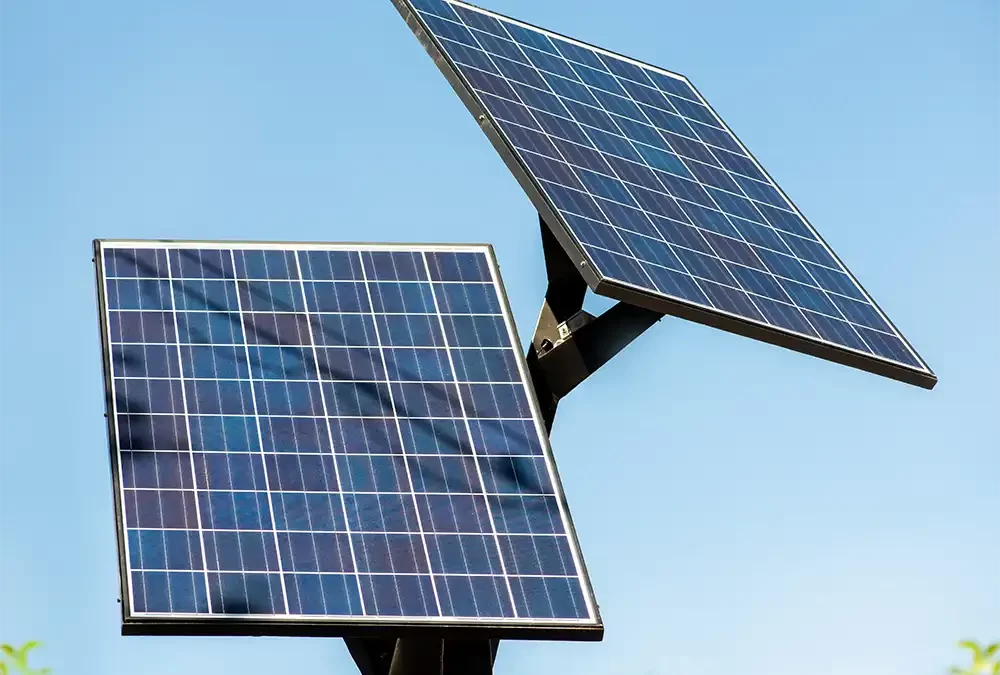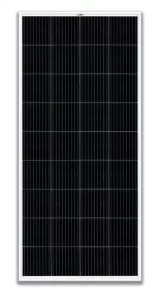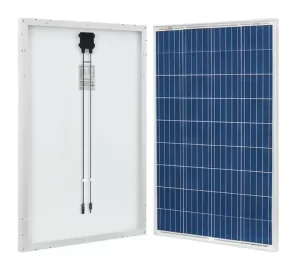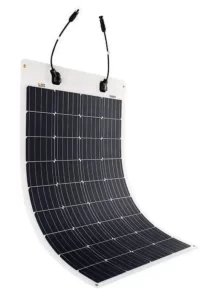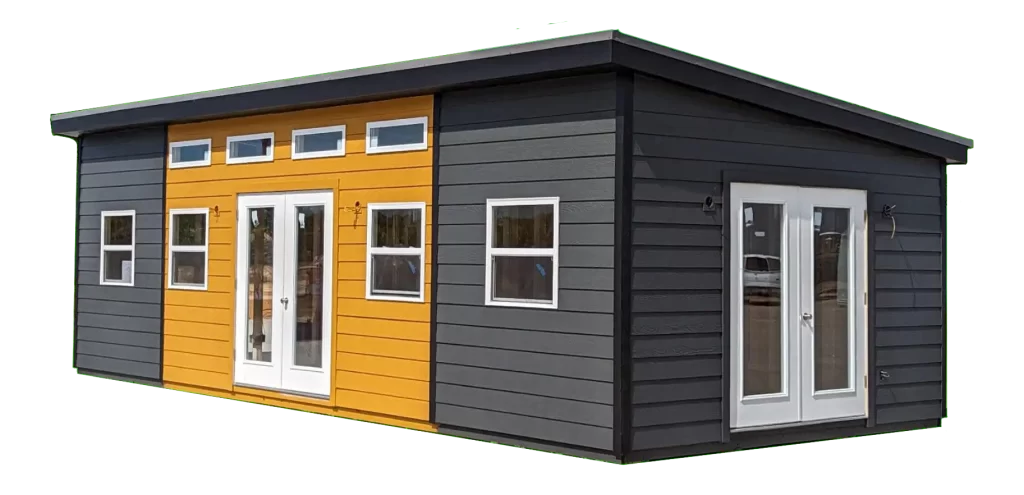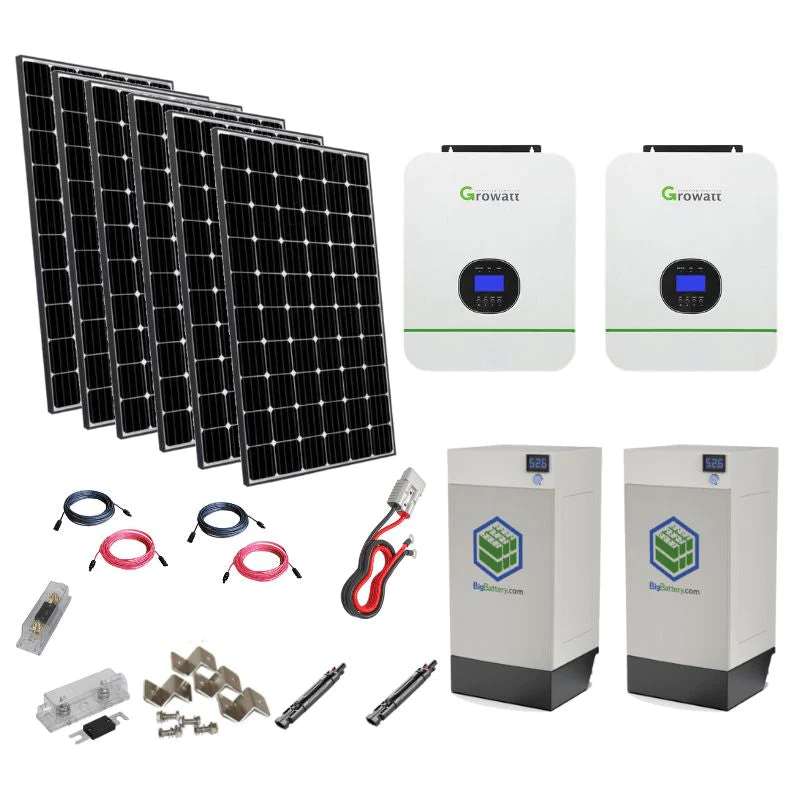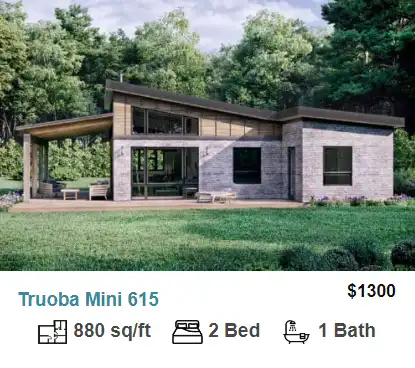The majority of solar panels currently on the market can be classified into three types: monocrystalline, polycrystalline, and thin-film. Each type of solar panel has unique advantages and disadvantages depending on the application. These types of solar panels vary in terms of cost, materials, efficiency, and form factor.
Monocrystalline Solar Panels
As the name suggests, monocrystalline solar cells are made from a single silicon crystal. The process for creating these crystals is known as the Czochralski process. This process requires a lot of energy and results in a lot of wasted silicon. The costs associated with producing solar cells in this manner result in monocrystalline solar panels being the most expensive solar panel option.
The individual solar cells are aligned in rows and columns forming the familiar-looking solar panel. The way pure silicon crystal interacts with light gives these panels a black appearance.
Monocrystalline solar panels are the most efficient type of solar panel currently available to most homeowners. They set the bar at efficiencies above 20%. In addition monocrystalline solar panels also come with increased wattage ratings, with some exceeding 400 watts.
Monocrystalline solar panels have an average lifespan of 45 years with many manufacturers offering a 25 year warranty.
These are the best choice for someone willing to make the investment upfront for maximum long-term returns.
Our Pick for Monocrystalline Solar Panels: 200 Watt Solar Panel | High Efficiency 12V Monocrystalline (19.98% Efficiency) | 25-Year Power Output Warranty
Polycrystalline Solar Panels
Polycrystalline solar cells are made by melting silicone fragments (often the waste left from producing monocrystalline cells) into a mold and cutting it into wafers. This process is much cheaper than that required for monocrystalline cells resulting in a lower priced unit for consumers.
Due to the impure nature of the polycrystalline wafers, panels made from these types of cells often only see an efficiency of 13-16%. The disparity in efficiency between polycrystalline and monocrystalline in low light conditions is even more dramatic.
Due to their lower efficiency and lower tolerance to heat, polycrystalline solar panels come with a lower wattage rating than that of a similarly sized monocrystalline panel. This results in a need for more polycrystalline panels in an array to reach desired performance.
In contrast with the uniform black appearance of monocrystalline panels, polycrystalline panels tend to look blue with random speckles.
In addition to affecting performance, heat can also shorten the lifespan of polycrystalline panels.
Polycrystalline panels for those looking to put together a substantial solar power system on a budget.
Our Pick for Polycrystalline Solar Panels: 100 Watt Polycrystalline Solar Panel | High Efficiency 12V
Thin Film Solar Panels
A variety of materials are used in the construction of thin film solar panels. The cheapest and most readily available type is made from cadmium telluride (CdTe). Thin film solar panels can also be made of amorphous silicon (a-Si). Though made of silicon, these are not to be confused with monocrystalline or polycrystalline panels. Instead of silicon wafers, these panels are composed of non-crystalline silicon. A third available option is Copper Indium Gallium Selenide (CIGS) type panels. These panels are constructed using all four namesake elements to capture energy.
Efficiencies vary by material but generally fall around 11%.
As with efficiency, cost also varies by the type of materials used in construction, but thin film panels do offer savings in the form of requiring much less robust mounting hardware.
Thin film panels are relatively rare in the home solar power system market compared with crystalline types, but should be considered for tiny homes on wheels (THOWs).
Our Pick for Thin Film Solar Panels: 100 Watt Flexible Solar Panel | 4.8 lb / 2.2 kg | 25-Year Power Output Warranty
Which type of solar panels are best for tiny homes?
- Monocrystalline solar panels are the best option for tiny home owners willing to invest in the highest efficiency option for the best long-term returns.
- Polycrystalline solar panels are the best option for tiny home owners wishing to put together an adequate solar power system on a budget.
- Thin film solar panels are rare in the home solar system market, but are a good option for tiny homes on wheels (THOWs) due to their lower profile and lighter weight.
If it is your first (or even 10th) time installing a solar power system, buying a kit of compatible components is almost always a better bet than trying to piece a system together. Check out our top picks for complete solar power systems in this article. If you still feel like you are better off putting your own system together, be sure to check out our article on the best batteries for solar tiny homes.
Go forth with your knowledge and dare to live tiny!

